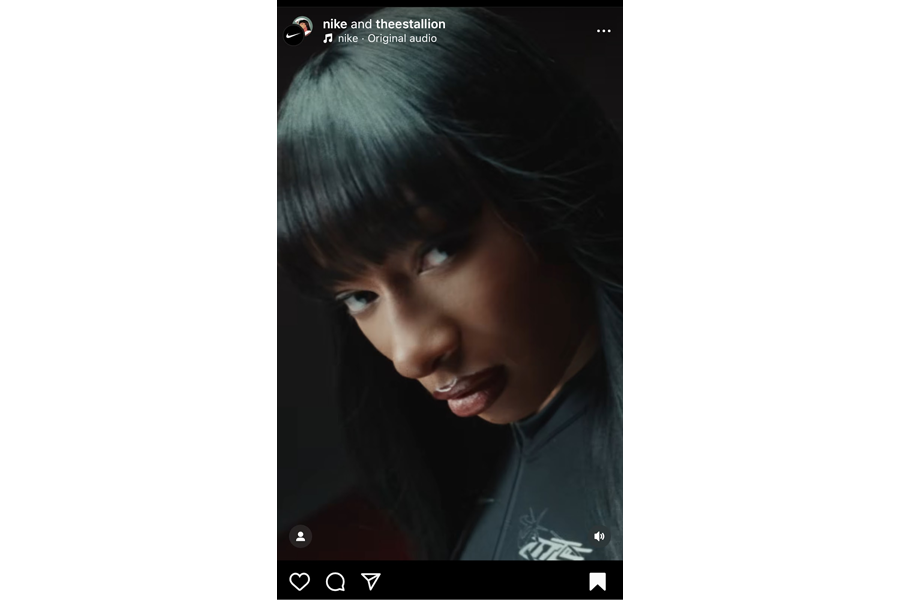Ever heard of GeoCities or Classmates.com? These were the first social media platforms from the 90s that paved the way for the social media giants we know today, including Instagram and Twitter. Not only has social media evolved, but content creation too.
We have witnessed creators go from producing long and intensive content to short-form content to increase conversion rates on social media. But it is not that simple. Both long-form and short-form social media content work well, but it depends on some factors. There are specific rules to follow when creating social media content that yields results. Follow us as we expose some of them.

Dos of Creating Content for Social Media
The first rule of creating content for social media is knowing your audience. This may not be the first time you have heard this; it won’t be the last. We have said it more than we can count and won’t ever get tired of saying it.
To know them, you should conduct a target audience and competitor analysis, which helps you to draw up a buyer persona to summarize their interests, behaviors, and preferences across multiple platforms. This information comes in handy for creating a well-suited for your target market.
While understanding your audience is critical, several factors come into play when creating content that connects your audience. Below, we will review them in detail.
Create Visually Appealing Content
To create visually appealing content, study and follow brands with a steady record of captivating content to inform your social media content strategy. A brand like Nike has done fantastic with its social media marketing.
Nike’s short but dynamic videos make their audience feel inspired and motivated. A recent example is a video featuring Megan Thee Stallion, where she partners with the brand to create a new fitness line appealing to hotties.
The following are ways to optimize the types of social media content:
- Images and Videos: High-quality videos will be a great way to make a good impression on your audience on video-oriented platforms like Instagram and TikTok. Like Nike, you can build a strong connection with your audience using high-resolution images and crisp, explicit videos.
- Designs: Infuse colors in your social media designs to make them pop. You should select attractive brand colors and logo concepts or infuse other colors into your social media design. Additionally, highlighting and using hierarchy makes a big difference when it comes to the design of your social media content.
- Written content and captions: Question and answer platforms like Pinterest use text as the main content format, and others allow you to caption the video, image, and design you shared. Allow your text to breathe by using white space. Use text highlighters, for example, bold, italics, and capital letters, to make texts readable.
Stay updated with the latest visual trends and ensure they align with your brand’s identity before infusing them. Your focus should be on ensuring your audience is hooked, and that’s why you should consider visuals during content creation.

Source: Instagram
Make Your Content Relevant to Your Audience
Relevant content on relevant channels is at the core of your social media strategy. Tailor each piece of content to your audience’s analysis data.
The following are more tips for using social media content for relevance:
- Find direct problems and answer questions: Every business’s goal is to solve a problem or multiple problems, so create content that addresses these problems. Use a content calendar to develop a list of content that addresses common questions, challenges, or needs your audience has to build trust and authority.
- Join in trending conversations: Tap into trending topics or hashtags your audience finds are engaging with. Just be careful that you aren’t discussing topics that are off-brand.
Don’t make assumptions about what content your audience might need. Conduct social listening exercises to gain data and insights on what will benefit them. Leveraging their comments, shares, and engagement for improvement and deeper connection.
Keep Your Content Concise and To-the-point
Eighty-one percent of people skim through content. Due to viewers’ decreasing attention spans, you need to keep your social media content concise and to the point.
You could use the following tips to keep attention:
- Use design hierarchy for your texts so readers can quickly grab the most essential information. Design hierarchy is the arrangement of text and elements to show their importance. The most important information should be the intro that draws people in.
- Use images that depict what you are talking about.
What’s important is that you keep content concise and clear. The length may vary as several long videos, threads, and carousel posts outperform short-form content. Factors like relevance, positioning, and content helpfulness will impact your results.
Use a Consistent Brand Voice and Tone
If you want your audience to spot you through your content quickly, have a consistent brand voice and tone across social media platforms. Most brands would have a brand voice document to guide their voice and personality.
Some of the action steps to take when developing your brand voice:
- Define your brand personality. Will it be professional, friendly, humorous?
- Enforce a brand guide with words to use and exclude for your brand on your team.
- Review your past posts to ensure consistency.
Not every post has to be a joke, but the overall tone should align with the brand’s established voice. Consider maintaining a sleek, minimalist, and innovation-focused tone across all platforms.
Experiment With Different Types of Content
BuzzSumo discovered after studying over 100 million Facebook posts that those with images had 2.3 times more engagement than those without. Therefore, it is essential to try different content formats to drive engagement on your social media platforms.
Here are some tips to help you create different content formats:
- Identify the types of content that your audience enjoys through insights and analytics.
- Create a content plan that mixes images, memes, videos, GIFs, and text posts.
- Monitor performance to see which types of content perform best and adjust your marketing strategy accordingly.
If you are in a technical niche, consider using infographics on platforms like LinkedIn to deliver complex messages. You should also share behind-the-scenes videos to connect with your audience.
Engage With Your Followers and Respond to Comments and Messages
Creating content for social media requires engaging with your audience frequently to build a loyal community. Not responding to comments or messages early can make your followers feel undervalued. Even though the creator economy is taking over, people still look forward to their social media to interact with others.
The following tips will help you engage better with your followers:
- Respond to comments and messages immediately and check for unresponded messages.
- If you can’t handle all the work on your own, use the help of a social media manager.
- Encourage interaction by asking questions and seeking feedback in your posts.
Engaging with your followers shows that you value your audience’s input.
Use Hashtags to Increase Your Reach and Discoverability
Nowadays, posting your business without including hashtags makes no business sense, especially on Instagram and TikTok. Hashtags, especially on TikTok, have the power to skyrocket your visibility.
Below are tips for leveraging hashtags in your posts:
- Use tools like Hashtagify or RiteTag to find relevant hashtags that align with your brand, content, and industry. Also, include long-form hashtags to increase your chances of getting found.
- Create and include a branded hashtag (like #danglifestyle) to increase brand awareness.
- Monitor trending hashtags and participate in relevant trends to increase visibility.
However, you mustn’t overdo it; use only relevant hashtags. Including an activism hashtag to promote your business on Twitter will be insensitive, except if it is business activism. It is best to avoid dragging your company in the mud for visibility.
Hashtags can also be used in user-generated content, so you can further increase brand loyalty and awareness.
Post Regularly and Consistently
Consistency determines long-term success in every profession, and content is no different. Posting content regularly keeps you on top of your mind for your followers. According to the social media algorithm, creating quality content on social media can skyrocket your visibility and, over time, your engagement rate.
The following are action tips for posting regularly on social media:
- Create a social media content plan to manage your content. Preparing your weekly content is wise as new trends arise and you want to jump on them immediately.
- Use a social media management tool to schedule your posts in advance.
- Determine the best times to post using the analytics tool. A social media platform like Instagram tells you when your followers are most active.
The way your audience reacts to your post should determine your posting frequency. The key is to find a balance that keeps your audience engaged without overwhelming them. You don’t want to post too much, but not too little.

Use Analytics to Track the Performance of Your Content
Every social media platform, from Twitter to LinkedIn, can give insights into each content performance. For example, you can find your post’s number of impressions, reach, likes, shares, and comments on Instagram.
The following are the importance of each metric:
- Reach: The unique number of times a visitor saw your content. A high reach indicates that your content and page are visible.
- Impression: The total time your post was viewed. It may indicate that the people who came across your content were hooked if it is way higher than your reach.
- Likes: This also shows the percentage of people who love your content. Note that not everyone who loves your content may tap like.
- Comment: What’s your comment rate like? If you had 20 reach, how many of the 200 commented on your post? This metric also indicates the level of interest in your content.
- Engagement rate: You can gain insights into how your posts are performing by calculating your engagement rate, which is: Engagement Rate = Total Engagement / Total Followers x 100%
- Setting specific goals (e.g., increasing engagement by 10%) will help you determine what number determines success for you.
Also, comparing your content’s data can improve your digital marketing strategy to meet your audience’s needs. For example, if you notice how-to videos have a higher engagement rate, then produce more educational how-to video content.
Stay Up-to-date With Social Media Trends and Changes
Social media constantly evolves, so keeping up with trends can be overwhelming. There is always a new update to the algorithm, features, and user preferences that could be daunting.
Below are tips to help you keep up:
- Follow social media news on Social Media Today or TechCrunch.
- Attend webinars, workshops, and conferences focused on social media and trends.
- Consult social media marketers for help if you have not been experiencing growth over time.
You can also experiment with new features and platforms to see if your audience prefers them. Moreover, the rise of TikTok has led many brands to explore short-form video content, which is now the latest trend in growing reach and engagement.
Don’ts of Creating Content for Social Media
If your aim with social media content creation is to post promotional content, you must rethink. Several companies are focused on making money and their selfish interests rather than what their audience wants. They also don’t incorporate their customers’ feedback, affecting their growth.
Not being intentional about your social media content could significantly impact your revenue. An inconsistent posting schedule and brand voice can confuse your audience, leading to a lack of trust. The following are don’ts for creating social media content. Don’t overlook them!
Don’t Create Content That Is Offensive or Controversial
Controversy has the power to get your brand in front of more eyeballs, but it can also take you from level 1000 to -1000 in minutes. We’ve witnessed how many famous individuals lost their relevance within a week because of a tweet they shared or posted the video.
Here’s how to avoid controversy:
- Keep your focus on positive content that inspires or educates. Your posts should not disrespect anyone or look desperate for clout.
- Educate yourself on social issues to avoid offending people unknowingly. Clarify certain words or phrases that could be seen as insensitive or prevent them altogether.
You should consult with your advisors or friends before posting sensitive content. Knowing your audience will also help you avoid content that would be disrespectful to them.
Don’t Use Excessive or Irrelevant Hashtags
Hashtags are essential for visibility, but finding a skincare product under a smartphone hashtag makes no sense. For every irrelevant hashtag, you may lose the chance to present yourself to potential customers. Learn how to include relevant ones instead of using irrelevant and spammy hashtags.
We’ve shared some tips below:
- Use hashtags directly relevant to your content or industry.
- Try using a handful of hashtags, so your posts don’t look spammy. Also, it’s good to know each hashtag’s limit. For example, Instagram allows up to 30 hashtags per post.
You should also research hashtags by looking at what hashtags influencers and competitors in your niche use.
Don’t Post Too Frequently and Overwhelm Your Audience
According to Rival IQ, a brand should post on Facebook about 5.04 times per week, while brands in the top 25% for engagement post 4.5 times per week. On Instagram, brands should do about 4.5 times per week. You don’t need to post ten times per day. You need a consistent and straightforward posting schedule.
Some tips for maintaining a schedule include:
- Use a content plan to ensure a consistent but not overwhelming presence.
- Also, share more easy-to-digest content. This way, you produce short-form content that serves people with short attention spans.
Pay attention to how your audience responds to your posts to determine whether they enjoy the frequency of your posts. If you post more than once daily and notice a decrease in engagement, you should reconsider.
Don’t Use Poor Quality Images or Videos
The competition for attention has gotten quite intense. Besides that, your audience has high expectations when creating content for social media.
Try out these tips to produce quality content:
- Get video creation equipment to make high-quality videos. You can start small with a decent smartphone camera in good lighting.
- Editing apps like Canva can be used to improve lighting, color balance, and content composition.
One thing about content is you must keep learning. It could be product photography or videography. The quality will improve over time; if not, hire a professional. Also, maintain using a color scheme that reflects your brand’s identity.

Don’t Use Clickbait or Misleading Headlines
Avoid using clickbait or misleading headlines. Headlines like that can quickly affect the trust between you and your audience.
Here’s how to create honest yet compelling headlines:
- Create headlines that reflect the content of your post. For example, if your article is about “10 Easy Recipes You Can Prepare in 25 Minutes,” the content should do that and not be a sales pitch for your new cookbook.
- Use action words to make them more engaging without using clickbait. Phrases like “Discover,” “Transform,” or “Learn” invite engagement because of the promise of value.
Finally, interest is generated through curiosity and relevance. Avoid spammy words and exaggerated phrases to get clocks. Also, remember that grabbing attention is one thing; holding it is another.
Don’t Use Social Media Just for Self-promotion
Your content should not always be promotional. It would be a massive turn-off if the only content they are getting from you is ‘come and buy this and that’ with no communication for value.
Here are some tips for managing content:
- 80% of your content should inform, educate, or entertain your audience. On the other hand, 20% will promote your business.
- Attract leads that have not converted with reviews, testimonials, or customer photos. This is a great way to show social proof and engage your community.
Overall, offer tips or insights your audience will find helpful. For instance, share skincare routines or explain ingredient benefits if you sell skincare products. Promoting your products or services is essential, but only self-promotion can turn off your audience.
Don’t Post Content That Is Not Related to Your Brand or Industry
Posting irrelevant content can push away potential customers. For example, posting your friends and family’s birthdays on your business page is unrelated. If your audience is business-minded, they might not take you seriously because of such posts. One way to consistently post relevant content is to have a brand guide and social media content strategy.
Even when posting about other related niche topics, find a way to relate it to your brand. A travel agency, for instance, can post about holidays and international conferences and suggest travel destinations.
Don’t Forget to Proofread and Edit Your Content Before Posting
Small mistakes can cost you a client. For example, imagine making a mistake by quoting a product of N5,000 instead of N15,000 for a product. Customers could get frustrated when it is time to pay and get charged 15,000. So, it is essential to check and cross-check content before posting.
Some tips to help polish your social media content before posting are:
- Use editing tools like Grammarly or the Hemingway App to correct spelling and grammatical errors.
- Read aloud to catch errors you might miss when reading silently.
- Have an editor or a friend review your content. A fresh pair of eyes can catch mistakes you’ve overlooked and provide feedback on clarity and engagement.
Before writing any content, create a checklist that ticks all the boxes for high quality and proofreading. Ultimately, you should edit your content yourself because the tools above are prone to mistakes, and they cannot tell facts apart from false information.
Frequently Asked Questions
What are the things you need to consider when creating social media content?
The first thing to consider is your audience, followed by your marketing goals. Other essential factors include making a content plan calendar and tracking performance.
What should you avoid when posting on social media?
When creating content for social media, avoid publishing offensive comments, controversial photos, and false information when posting on social media.
What type of content is the most popular?
Тhe most popular types of content are blogs, ebooks, and video content. However, you don’t need to create all three to thrive. Learn what works for your market and experiment.